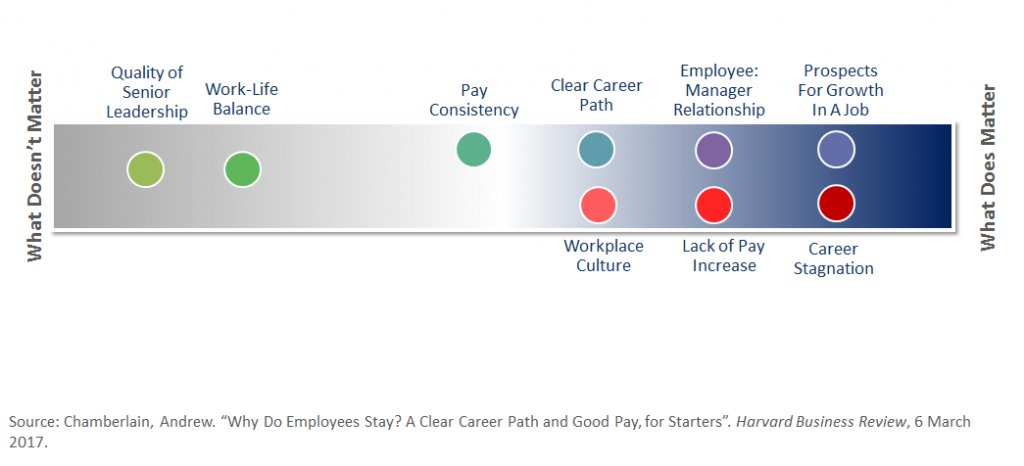Employee Training and Retention Go Hand-in-Hand


What is your association’s mindset when it comes to employee training for your staff?
On one hand, you don’t want to invest time and effort in someone just to have them leave. But if you don’t keep an employee engaged by challenging them and helping them grow their skill sets, will they stay? Probably not for long.
To probe further into this conundrum, we spoke with some of Naylor’s association clients to see what they do regarding training and retention. A majority of the ones we spoke with said they don’t currently have a training program in place, yet most employees polled by organizations like Glassdoor say that they would stay in a job longer if provided with professional development.
In many cases, workplace training can actually increase employee retention because it helps employees develop a greater sense of self-worth as they become more valuable to your association’s staff. Kathy Giblin, director of human resources for the American Academy of Physical Medicine and Rehabilitation, says the academy has experienced a higher retention rate of those employees into whom they have invested training and resources.
“We’ve also noted increased productivity and a decreased need for constant supervision among those employees who participate fully in our professional development activities,” she continued. So, what matters when talking about employees on the move? Here’s what one study says about why employees stay in a job:

- Prospects for growth in a job
- Employee-manager relationship (You’ve probably heard the adage that employees don’t leave companies, they leave their managers)
- Clear career path
- Pay consistency
Of the four reasons for staying in a job listed above, an employee training program can directly impact three of them. When training is provided by an association, employees feel that they are able to grow in their positions and feel good about the work they are doing. Formal or informal training given by a direct supervisor also positively impacts the relationship between the employee and supervisor. Finally, training can reinforce and create a career path that may or may not have existed prior.
What doesn’t matter in all this? The quality of senior leadership does not impact whether the average employee stays or goes. And as much as anecdotal stories might tell otherwise, this study shows that overall work-life balance doesn’t really impact transitions either.
Why do employees leave their jobs? These are three main reasons, according to published research:
- Career stagnation
- Lack of pay increase
- Workplace culture
Career stagnation has the greatest impact. A study conducted by Glassdoor found that for every 10 months an employee stays in a position without training or a clear path to a promotion they are 1 percent more likely to leave the company.
Job training can be either formal or informal. There are plenty of opportunities to provide courses for your employees or bring in professionals to speak about appropriate topics. Giblin of AAPMR likes to use Lynda.com for her employees because this site (acquired by LinkedIn in 2015) offers a variety of courses about everything from website design to Excel, including training about the VLOOKUP formula. If you don’t know what I mean when I say “VLOOKUP,” you should probably, um, look it up – it will change your life if you use Excel extensively.
At Naylor Career Solutions, in addition to formalized training through our learning management platform, we find that informal training that focuses on micro skill sets that an employee uses in their daily tasks often has the biggest impact on their job confidence and their results.
For example, when it comes to making outbound phone calls on behalf of some of our association clients, one of the most frequent, thorniest and often overlooked skills is the need to enunciate words clearly. To help with this we have employed the Fox in Socks Challenge:
 Sales reps who want to improve their verbal enunciation practice reading from this children’s classic. Try reading these opening lines from the book out loud:
Sales reps who want to improve their verbal enunciation practice reading from this children’s classic. Try reading these opening lines from the book out loud:
Fox
Socks
Box
Knox
Knox in box.
Fox in socks.
Knox on fox in socks in box.
Socks on Knox and Knox in box.
Fox in socks on box on Knox.
It’s tough not to slow down and enunciate!
It’s vital in today’s competitive hiring landscape that associations identify and retain key talent. But once hired, it is up to your association to cultivate and grow your employees. Implementing either formal or informal training can serve as a bridge to higher retention and a more satisfied workforce.


